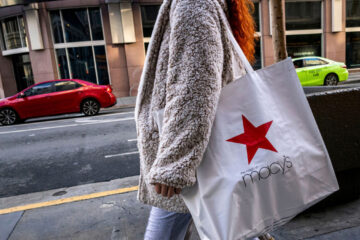The Beige Book, a publication on the latest conditions in the U.S. economy, gets its name from the color of the cover of the report.
Federal Reserve Bank of Atlanta; Canva
What Is the Beige Book?
The Beige Book is a publication that reflects the latest economic conditions across the 12 districts of the Federal Reserve. Its official title is “Summary of Commentary on Current Economic Conditions by Federal Reserve District,” and the report also reflects changes in economic sentiment since the prior report.
The publication is based on qualitative data, which is anecdotal evidence and information derived from observations and responses from participants that can be analyzed (as opposed to quantitative data, which are based on numerical values.)
Why Is It Called the Beige Book?
The Beige Book gets its name from the color of the cover of the published report. The report was first published in 1970 and had been known then as the Red Book—also based on the color of its cover. In 1983, the neutral color was adopted, giving the report its present nickname.
Another briefing report nicknamed the Tealbook is provided to the Federal Open Market Committee as well. Its official title is the “Report to the FOMC on Economic Conditions and Monetary Policy,” and it contains detailed analysis of the latest economic and financial conditions and projections as well as information on alternatives to monetary policy.
How Is the Beige Book Compiled?
Each of the Federal Reserve’s 12 districts compiles information on the latest economic conditions for its area, and all of these separate, regional reports are then gathered into a national summary. A diverse set of sources includes businesses, economists, community groups, and market experts who are interviewed by phone and surveyed regularly either by mail or online.
The survey is known as the Intermittent Survey of Businesses, and questions focus on labor markets and prices in every district, but each region has its own unique characteristics, as categorized and listed by district number (based on the November 2022 report) in the table below. For example, the Dallas district has a specific focus on retail sales, like whether inventories are piling up, while Minneapolis focuses on minority- and women-owned business enterprises, such as how Native American businesses are coping with wage pressures.
A sample question of the survey sent to respondents reads below:
Do you expect your firm to increase employment, remain unchanged, or decrease employment over the next twelve months?
a. Increase
b. Unchanged
c. Decrease
Why Is the Beige Book Important?
The report is used to help the Fed understand the state of the economy before making decisions on monetary policy. The Fed uses various types of data on the economy including leading and lagging indicators such as retail sales, auto sales, manufacturing output, inflation, and unemployment—all of which are quantitative in nature.
Having perspectives from executives, business owners, and community leaders can provide valuable insight into the state of the economy that indicators lack. A question on the outlook of spending or the economy could provide clues on what the conditions might be in the short or long term. Answers from the surveys could also indicate how macroeconomic factors such as interest rates and inflation are affecting businesses and how consumers may react.
When Is the Beige Book Released?
The Fed releases the Beige Book eight times a year. The report is typically published about two weeks before the regularly scheduled meeting of the FOMC.


